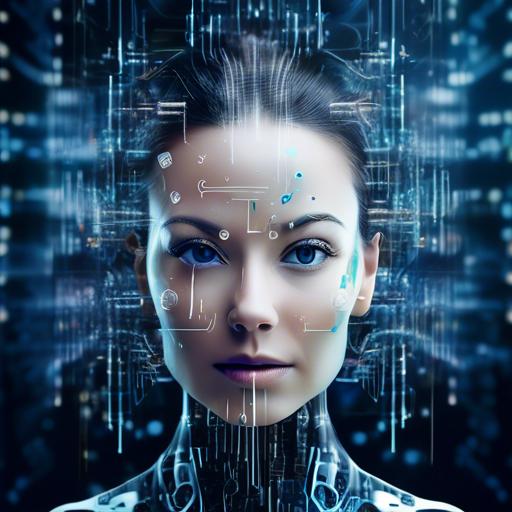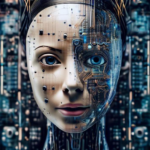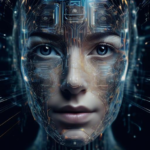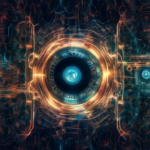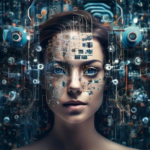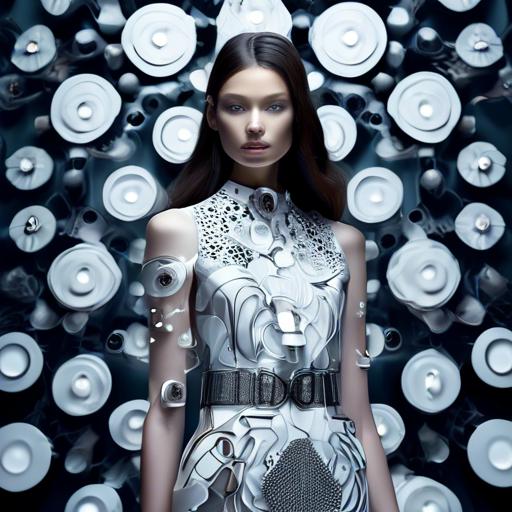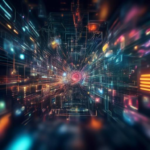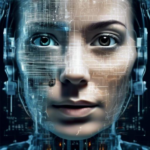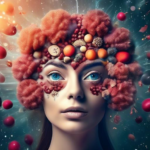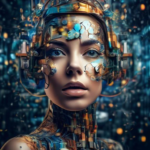In the whirlwind of digital innovation, artificial intelligence has emerged as a maestro, orchestrating a symphony of possibilities with its intricate algorithms and ceaseless learning capabilities. Among its most mesmerizing feats is the ability to generate lifelike images from the vast canvas of data that stretches across our digital universe. Yet, behind these pixel-perfect masterpieces lies a crucial, often unsung hero: data augmentation. Imagine data augmentation as the seasoned coach whispering wisdom into the ears of a budding artist, subtly refining their strokes, expanding their repertoire, and igniting unforeseen creative potentials.
As we delve into the realm of advanced data augmentation techniques, we find ourselves at the crossroads of machine precision and boundless imagination. These techniques are not merely about multiplying datasets; they’re about enriching the learning palette, injecting diversity, and embracing the unexpected quirks that fuel innovation. In this exploration, we celebrate the meticulous craft of data augmentation, revealing how it breathes life into AI image generators and transforms them from mere apprentices to virtuosos. So, let’s embark on this fascinating journey together, unraveling the sophisticated layers that bring artificial dreams closer to reality.
Table of Contents
- Harnessing the Power of Synthetic Data: Elevate Your AI Models
- Transformative Approaches in Image Flipping and Rotation
- Beyond the Basics: Innovative Color Manipulation Techniques
- Augmenting with Texture: Adding Realism through Noise Injection
- Unleashing Potential with GAN-Based Augmentation Strategies
- The Role of Style Transfer in Creating Diverse Datasets
- Best Practices for Combining Multiple Augmentation Methods
- Augmentation Pitfalls to Avoid for Optimal Model Performance
- Future Trends in Data Augmentation: What to Expect
- Closing Remarks
Harnessing the Power of Synthetic Data: Elevate Your AI Models
In the ever-evolving landscape of artificial intelligence, **synthetic data** emerges as a game-changer, offering new ways to enhance and refine AI models. By generating artificial yet realistic datasets, you can solve numerous issues related to data scarcity, bias, and privacy. Here, we delve into advanced techniques for augmenting data specifically within the realm of image generation to elevate your AI models.
**Types of Synthetic Data Techniques:**
- Generative Adversarial Networks (GANs): GANs pit two neural networks against each other, creating high-resolution images that mimic real-world photos. They excel in generating diverse datasets that address specific needs without compromising quality.
- Data Sampling Methods: Through the art of oversampling and undersampling, you can balance dataset imbalances, ensuring an equitable representation of all classes in your image datasets.
- Simulation Engines: Tools like Unity and Unreal Engine allow the creation of virtual environments where you can control every aspect of the data, from lighting to angles, giving limitless possibilities for variety.
**Applications in Various Fields:**
- Healthcare: Synthetic datasets enable the creation of medical images without patient data, preserving privacy while improving diagnostic accuracy.
- Autonomous Vehicles: Simulated driving environments can generate vast amounts of training data for self-driving algorithms, offering scenarios that are hard to encounter in real life.
- E-commerce: Retailers can generate thousands of product images in various settings, helping to train models for everything from inventory management to personalized shopping experiences.
| Technique | Strength | Use Case |
|---|---|---|
| GANs | High Fidelity | Image Quality Enhancement |
| Data Sampling | Balancing Datasets | Class Imbalance |
| Simulation Engines | Controlled Environments | Multiple Scenarios |
Implementing these synthetic data techniques doesn’t just **augment your existing datasets**; it also opens new avenues for **creative problem-solving**. By integrating these methods, you amplify the robustness of your AI models, ensuring they are not only accurate but also adaptable to various real-world conditions.
Transformative Approaches in Image Flipping and Rotation
Image flipping and rotation are powerful techniques in the realm of data augmentation for AI image generators. These maneuvers not only diversify the training dataset but also enhance the robustness and adaptability of AI models. Leveraging the potential of these transformative strategies can lead to significant improvements in image recognition, classification, and even in the generation of new images.
**Flipping** is a straightforward yet effective method. By horizontally or vertically flipping images, the model can learn to recognize features from different perspectives. **Horizontal flips** are particularly beneficial for natural scenes and symmetrical objects, while **vertical flips** often prove useful for specialized contexts like medical imaging or specific architectural designs. The significance of flipping can be encapsulated as follows:
- Enhanced Feature Recognition: Models learn to identify objects irrespective of their orientation.
- Balanced Dataset: Flipping helps in preventing biases towards a particular orientation or viewpoint.
Rotating images introduces additional complexity, which can be invaluable for certain applications. Rotations can range from slight tilts to full 90 or 180-degree turns. This approach is especially beneficial for fields where orientation matters, such as aerial imagery or complex pattern recognition. Here’s a snapshot of how rotations can transform the dataset:
| Rotation Angle | Application Example |
|---|---|
| 10° – 30° | Minor adjustments in manufacturing defect detection |
| 45° | Object detection in retail shelf scanning |
| 90° | Orientation-independent image classification |
| 180° | Symmetry detection in medical imaging |
The impact of these transformations is multiplied when combined. Imagine flipping and then rotating an image – this not only provides unique training examples but also mimics real-world variability. Such nuanced transformations make the AI model more resilient to real-life data irregularities, ultimately leading to smarter and more reliable AI solutions.
Beyond the Basics: Innovative Color Manipulation Techniques
- Advanced Color Jittering: Moving beyond basic color adjustments, advanced color jittering involves random variations in brightness, contrast, saturation, and hue. By introducing these subtle modifications, neural networks are trained to be more resilient to changes in lighting and color, leading to a more robust model.
- Color Channel Swapping: This technique manipulates the RGB channels, either swapping them or transforming them into other color spaces such as HSV or LAB. This not only provides a different perspective for the AI to learn from but also helps in generalizing across diverse datasets.
- Grayscale Conversion with Enhancements: Converting images to grayscale can be an effective augmentation, but taking it a step further by reintroducing selective color splashes can create a dramatic effect. This helps in training the model to retain important color features amidst monochromatic backgrounds.
- Synthetic Color Palette Generation: Generating entirely new color palettes based on the image content can offer a fresh realm of data variation. Whether it’s emulating a specific photo filter or deriving colors from nature, these synthetic palettes can enhance model adaptability.
- Color-Mood Associations: By tying specific color schemes to various moods or themes, you can create a dataset that not only diversifies in color but also in emotional tone. This aids in generating images that are not only visually appealing but also contextually relevant.
| Technique | Benefit |
|---|---|
| Color Jittering | Enhances lighting and color variation resilience |
| Channel Swapping | Improves generalization across datasets |
| Grayscale Conversion | Emphasizes important color features |
| Synthetic Palettes | Broadens color diversity |
| Color-Mood Associations | Contextually enriches image generation |
Augmenting with Texture: Adding Realism through Noise Injection
In the realm of computer vision and AI-generated images, texture often plays a critical role in bridging the gap between a synthetic and a photo-realistic look. **Noise injection** — a process where randomness is introduced into certain aspects of an image — can be a game-changing technique for adding realism. By infusing texture irregularities and subtle disruptions, we remind our algorithms that the world, in its essence, is wonderfully imperfect.
Noise injection can be applied in a plethora of ways, each method offering a unique flavor of realism. Here are some notable techniques:
- Gaussian Noise: Adds a bell curve-distributed noise, providing a natural appearance of grain.
- Salt and Pepper Noise: Introduces sparse black and white pixels, simulating dust and scratches.
- Perlin Noise: Creates smooth, flowing variations useful for organic textures like wood grain and clouds.
- Speckle Noise: Imparts multiplicative noise, often used for mimicking artifacts in medical imaging.
| Type of Noise | Primary Use |
|---|---|
| Gaussian Noise | Natural grain appearance |
| Salt and Pepper Noise | Simulating dust and scratches |
| Perlin Noise | Organic textures (wood, clouds) |
| Speckle Noise | Medical imaging artifacts |
Strategically injecting noise into images doesn’t just enhance realism; it also makes AI models more robust. Training with noisy images can improve a model’s ability to handle real-world imperfections, enhancing performance on unseen data. It’s a methodical way of saying, ”Hey, expect some chaos.” Notably, noise injection aids in differentiating similar textures, which is pivotal for tasks like segmentation and object recognition.
By mastering noise injection, you’re not just adding static; you’re weaving a tapestry of authenticity. The key is to balance — too little, and the effect may go unnoticed; too much, and you risk overwhelming the visual integrity of the image. Embrace the imperfections, and your AI-generated visuals will resonate with tangible realism.
Unleashing Potential with GAN-Based Augmentation Strategies
Generative Adversarial Networks (GANs) have revolutionized the field of data augmentation by providing AI image generators with the ability to produce highly realistic synthetic data. These networks enable the creation of diverse datasets by generating new images that closely mimic the statistical properties of the original dataset. This process not only enhances the diversity of training data but also addresses the common issue of data scarcity in various AI applications.
Key Advantages of GAN-Based Augmentation:
- **Enhanced Diversity**: GANs introduce novel variations into the dataset, which helps in training more robust models.
- **Data Balancing**: They can generate synthetic examples to balance skewed datasets, ensuring that minority classes are well-represented.
- **Realism and Detail**: The generated images are highly realistic, which ensures that the models trained on these images perform well on real-world data.
- **Customizable Outputs**: By tuning GAN parameters, specific attributes of the generated data can be controlled, allowing for tailored data augmentation.
To illustrate the impact of GAN-based augmentation, consider an AI image generator for medical imaging purposes. Traditional augmentation techniques might include flipping, rotation, and scaling of images, but GANs can produce entirely new, synthetic images that incorporate realistic features of medical conditions. This greatly enhances the variability and richness of the training dataset, ultimately leading to more accurate diagnostic tools.
| Technique | Advantages | Use Cases |
|---|---|---|
| Image Generation with GANs | High realism, Customizable outputs | Medical imaging, Rare object detection |
| Traditional Augmentation | Simple implementation, Quick results | Basic image classification tasks |
One particularly successful application of GAN-based augmentation is in enhancing the performance of facial recognition systems. By generating diverse facial expressions, lighting conditions, and even ages, GANs help in creating training datasets that encompass a wide range of scenarios. This leads to models that can robustly handle real-world conditions, improving their reliability and effectiveness.
GAN-based augmentation strategies unlock new possibilities for data enrichment in AI image generators. By leveraging these advanced techniques, developers can overcome the limitations of traditional augmentation, ultimately leading to more robust and versatile AI applications.
The Role of Style Transfer in Creating Diverse Datasets
In the realm of AI image generation, the use of **style transfer** serves as a formidable technique for creating diverse datasets. It involves taking the stylistic elements from one set of images and seamlessly integrating them into another, providing a rich tapestry of visual variance that not only enhances the dataset but also improves the generalization and versatility of AI models.
**Style transfer** opens up a realm of possibilities by allowing developers to infuse datasets with unique aesthetics. Imagine transforming a mundane street scene into a work of art by applying the styles of famous painters. Not only are AI models exposed to a broad spectrum of visual cues, but the datasets also become inherently more robust and less prone to overfitting.
- Enhanced Visual Diversity: Style transfer ensures that a dataset benefits from a wide array of textures, colors, and patterns.
- Improved Model Generalization: By exposing AI to varied styles, models learn to recognize and adapt to different visual contexts.
- Creative Applications: Leveraging artistic styles can create applications in digital art, advertising, and more.
| Style Source | Target Image | Result |
|---|---|---|
| Monet’s Paintings | Urban Landscapes | Dreamlike Cities |
| Van Gogh’s Art | Nature Photos | Starry Nights |
| Abstract Art | Portraits | Colorful Faces |
Additionally, style transfer can turn **synthetic data** into more lifelike visuals by adding realistic textures and details, making the dataset more applicable to real-world scenarios. This capability is invaluable in fields where obtaining annotated real-world data is time-consuming and costly.
style transfer is a powerful tool in the arsenal of data augmentation techniques. It not only embellishes datasets with a rich variety of styles but also fosters innovation, enabling the creation of AI models that are both highly adaptive and creatively inspired.
Best Practices for Combining Multiple Augmentation Methods
In the realm of AI image generation, melding various augmentation methods can exponentially enhance your model’s robustness and generalization capability. However, successfully orchestrating these techniques requires a keen sense of balance and timing.
**Layering augmentations:** Instead of bombarding your dataset with all augmentations at once, think of layering them incrementally. For example:
- Start with basic geometric transformations like rotation and scaling.
- Then introduce color adjustments such as brightness or contrast changes.
- add more complex alterations like noise addition or perspective shifts.
**Probabilistic approach:** Combine augmentations using probabilistic logic to avoid overfitting and retain diversity. You could assign different probabilities to each technique, ensuring that not every image undergoes the same set of changes.
| Augmentation Method | Probability |
|---|---|
| Rotation | 50% |
| Color Jitter | 30% |
| Gaussian Noise | 20% |
**Synergy and interactions:** Pay close attention to how different augmentations interact. Some combinations can have synergistic effects, boosting your AI’s learning potential. For instance, slightly rotating an image before applying a color jitter can simulate more realistic variations in real-world data.
**Monitor and iterate:** It’s essential to continuously monitor the effects of compounded augmentations. Are they genuinely enhancing the model’s performance, or are they introducing artifacts that confuse the AI? Employ validation datasets and iterate based on performance metrics.
the art of combining augmentation methods lies in strategic application and continuous refinement. When executed thoughtfully, this synergy not only fortifies your models but also extends their applicability across diverse, real-world scenarios.
Augmentation Pitfalls to Avoid for Optimal Model Performance
In the journey to enhance AI image generators through advanced data augmentation techniques, it’s crucial to navigate potential pitfalls that can compromise model performance. These pitfalls are often overlooked but can have significant impacts on the effectiveness of your models.
Over-Aggressive Transformations
While it’s tempting to apply aggressive transformations to your dataset to increase its diversity, this can lead to unintended consequences. **Excessive alterations** may distort the characteristics of your images to the point where they no longer resemble the original data. This can confuse the model and **reduce its accuracy**. It’s essential to balance diversity with maintaining the essence of the original images.
- **Subtle Rotations and Flips**: Helps maintain spatial orientation.
- **Moderate Scaling**: Preserves aspect ratios without significant distortion.
- **Careful Color Adjustments**: Avoids drastic changes that can mislead the model.
Ignoring Class Balance
An often-overlooked issue is **class imbalance** within augmented datasets. If certain classes are over-represented due to augmentation, the model may become biased, favoring these classes over others. Ensuring that all classes are equally represented is vital for balanced learning. Implement checks during the augmentation process to maintain a fair distribution of classes.
| Class | Original Count | Augmented Count |
|---|---|---|
| Class A | 200 | 400 |
| Class B | 150 | 300 |
| Class C | 250 | 500 |
Insufficient Validation
Validation is paramount in ensuring the effectiveness of augmented data. It’s essential to **validate your augmented dataset** against a reliable validation set to detect any inconsistencies or errors introduced during augmentation. Without sufficient validation, you risk training your model on faulty data, leading to **poor generalization** on unseen data.
Implementing strategies such as cross-validation or splitting your data into multiple validation sets can help mitigate the risks. This allows you to refine your augmentation techniques iteratively, ensuring that each modification positively impacts the model’s performance.
Future Trends in Data Augmentation: What to Expect
Looking ahead, data augmentation techniques are poised to become even more innovative, enhancing the capabilities of AI image generators. **Synthetic data generation**, leveraging models like Generative Adversarial Networks (GANs), will continue to play a pivotal role. These models create highly realistic images that help in training AI for scenarios where acquiring real-world data is challenging or impossible.
We can also expect a surge in **automated data augmentation strategies**. Using reinforcement learning, AI can optimize its data manipulation techniques based on the performance metrics of the generated data. This ensures that the augmentation process is not only effective but also efficient, fine-tuning itself without extensive human intervention.
**Domain-specific augmentations** will gain prominence too. AI systems dedicated to particular fields, such as healthcare or autonomous driving, will use tailored augmentation strategies to meet their unique requirements. For instance, in medical imaging, augmentations might focus on simulating rare disease symptoms that are hard to capture in real-life situations.
| Technique | Description |
|---|---|
| Synthetic Data Generation | Creating artificial images for scarce or diverse datasets. |
| Automated Data Augmentation | Reinforcement learning-driven optimization of data transformation methods. |
| Domain-Specific Augmentation | Custom transformations tailored to the needs of specialized fields. |
Another exciting direction is **3D data augmentation** for AI systems that understand and generate three-dimensional spaces. This is especially vital for applications in virtual reality, gaming, and robotics. Engineers will be able to simulate various lighting conditions, textures, and physical interactions to enrich the AI training datasets.
the integration of **multimodal augmentation**, which combines image data with other data types such as text and audio, will offer richer, more contextually relevant datasets. This holistic approach enables the creation of more intelligent, context-aware AI models capable of performing complex tasks that transcend simple image recognition.
Closing Remarks
the world of artificial intelligence continues to push the boundaries of what is possible in image generation. By utilizing advanced data augmentation techniques, researchers and developers are finding new and innovative ways to enhance the capabilities of AI systems. As we look towards the future, it is clear that the possibilities are endless. Let’s continue to explore, innovate, and imagine the extraordinary potential of AI image generators. Together, we can create a future where the boundaries between reality and imagination blur into a beautiful fusion of creativity and technology.

